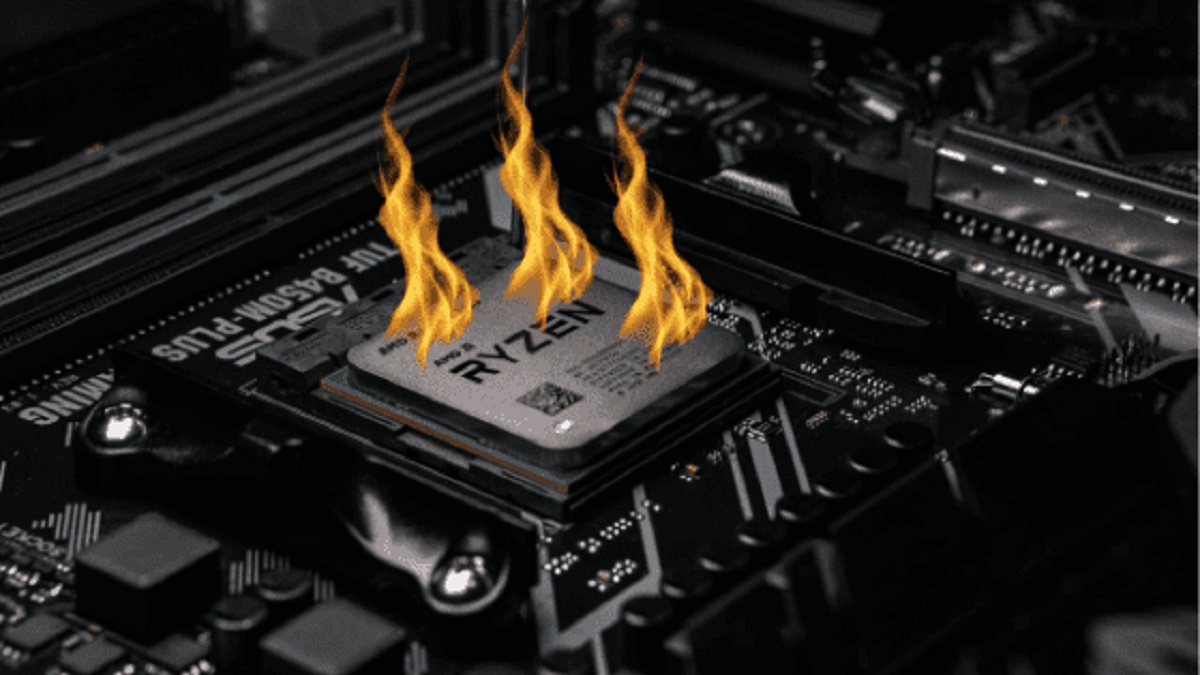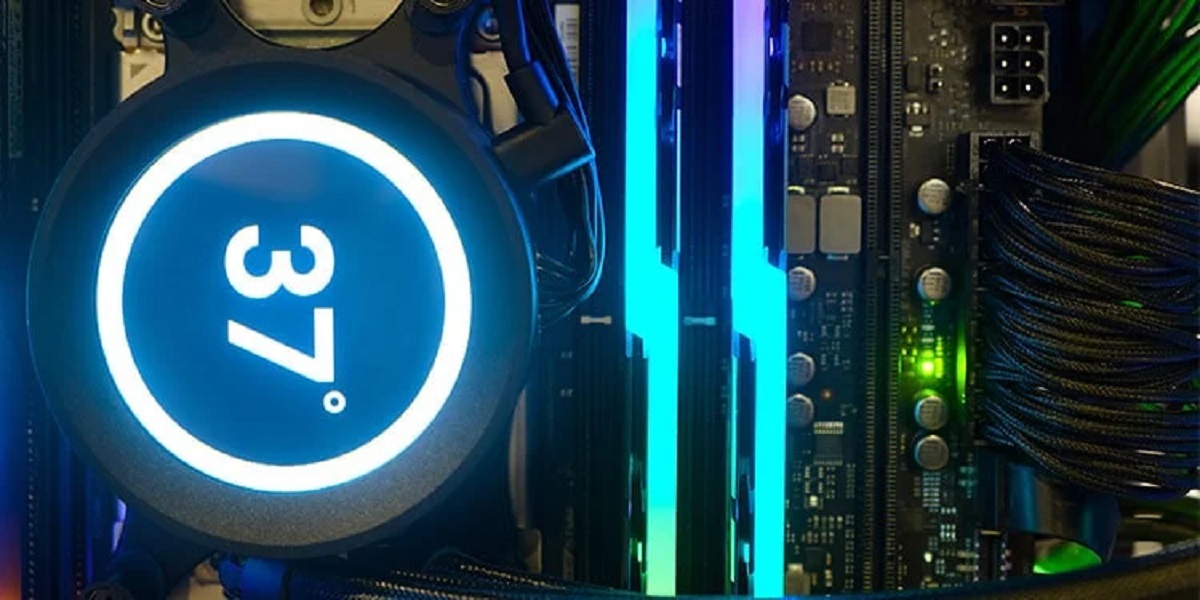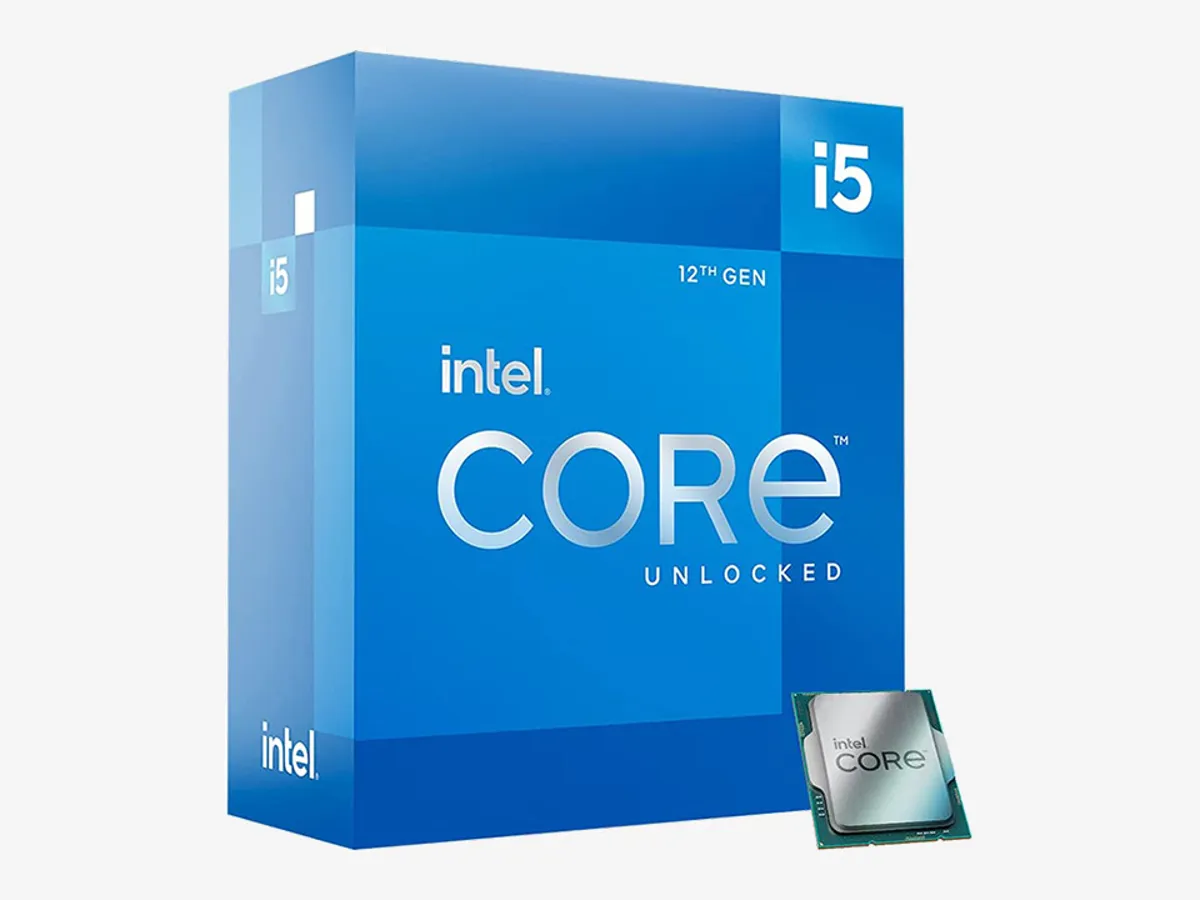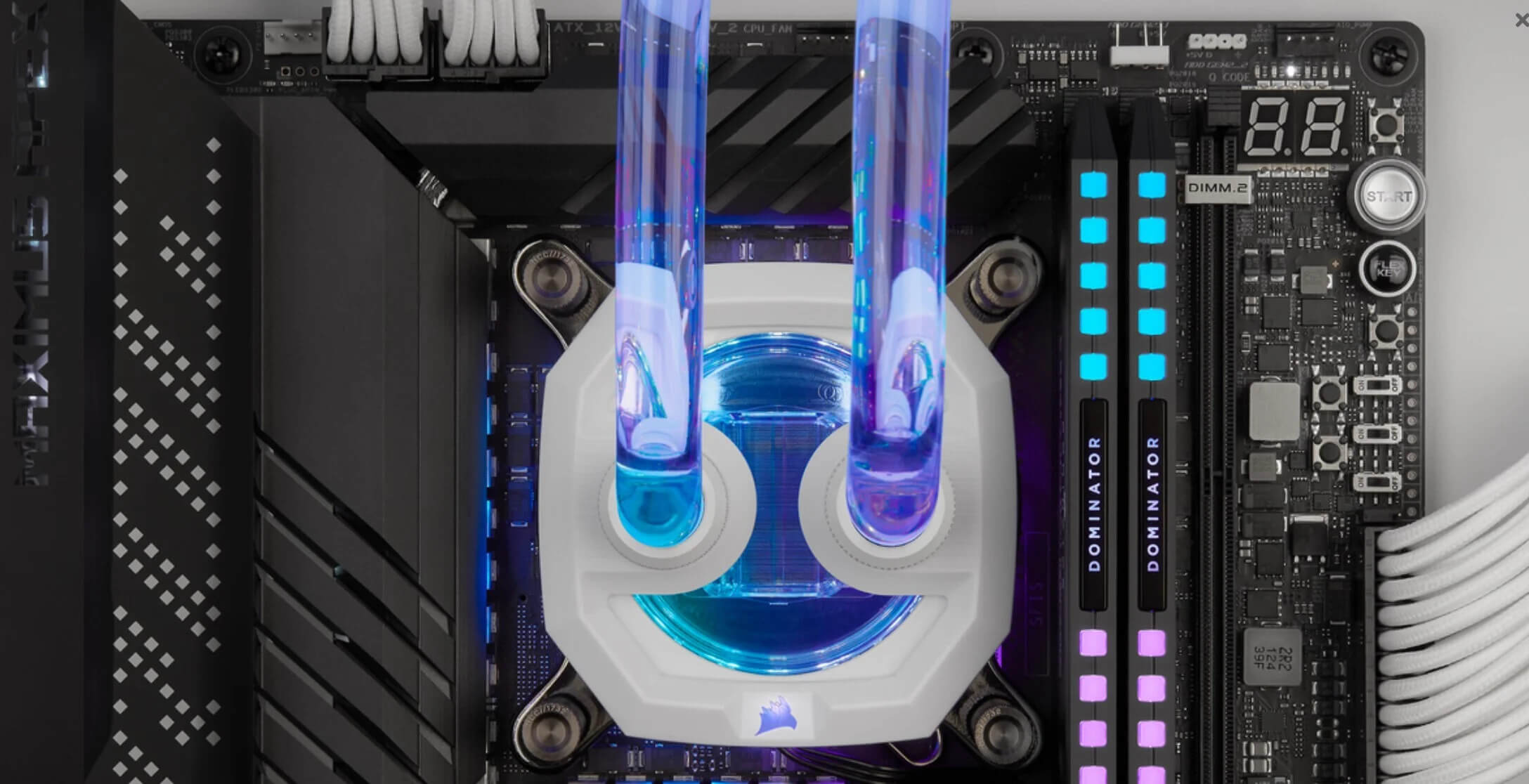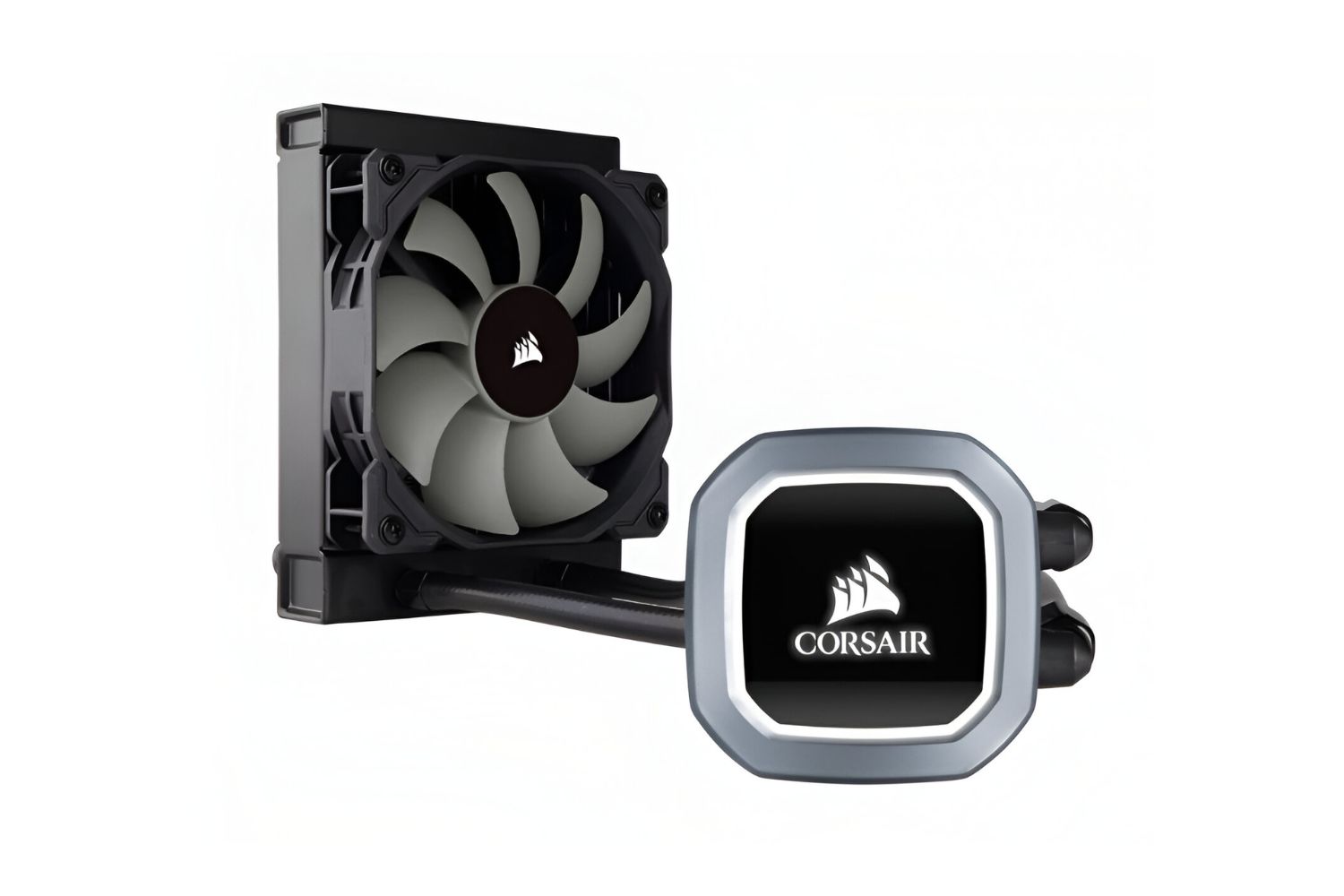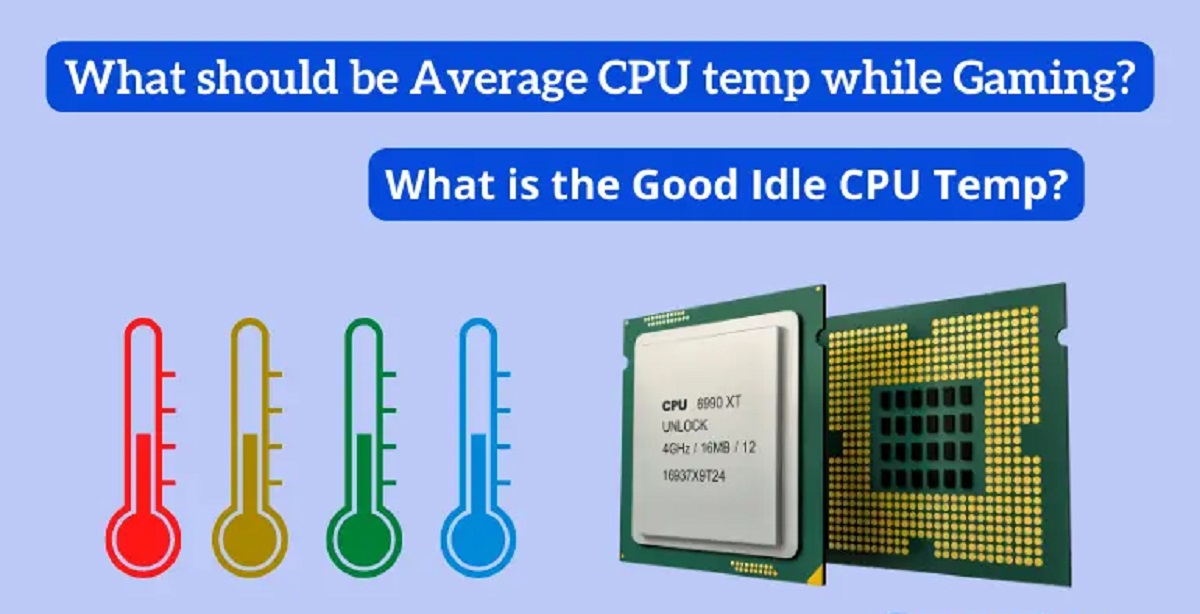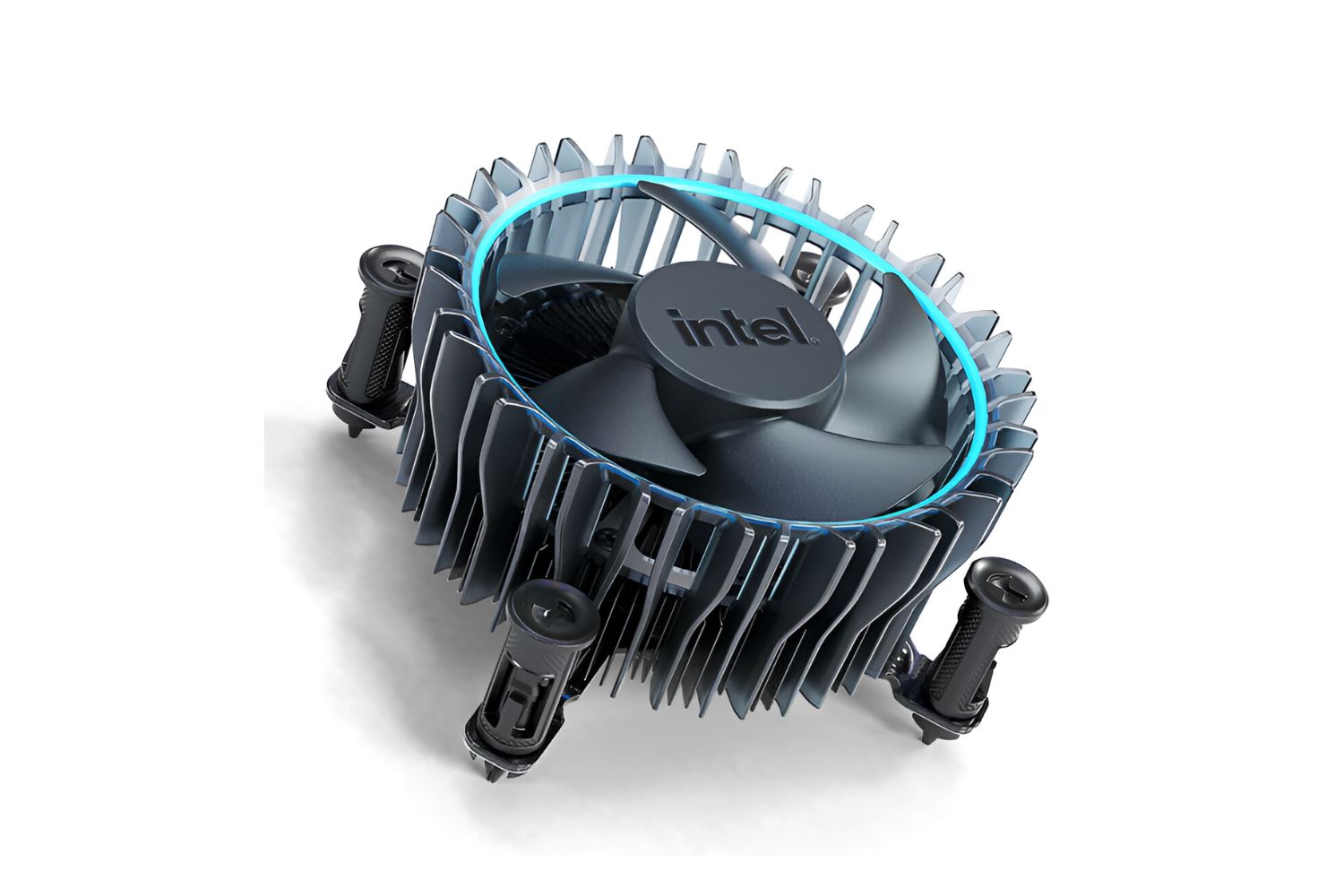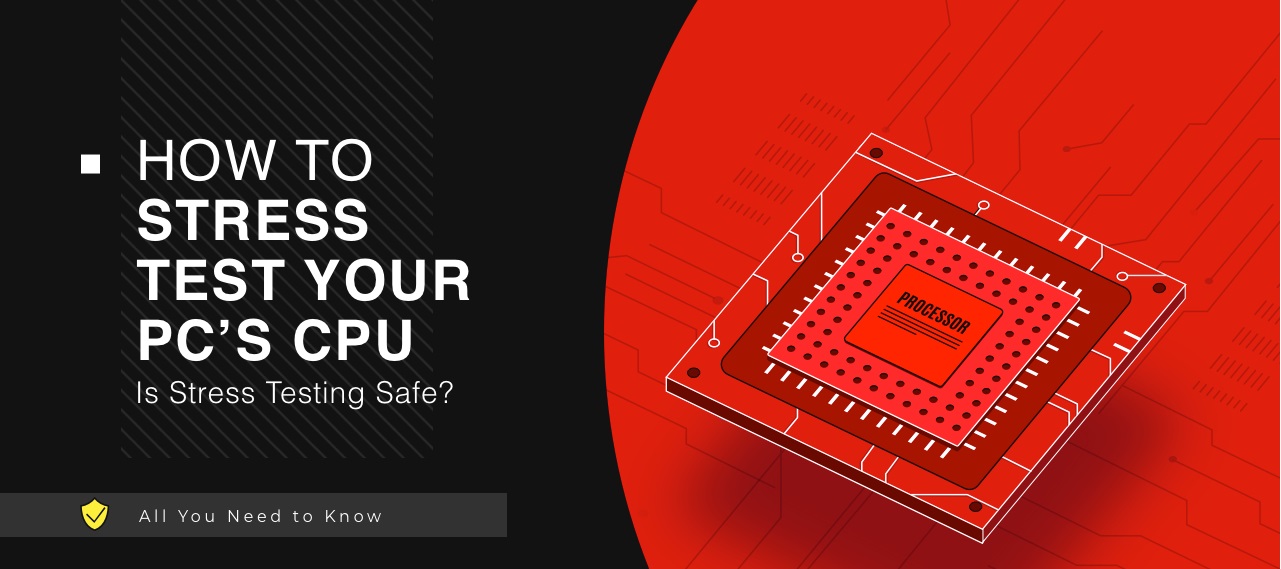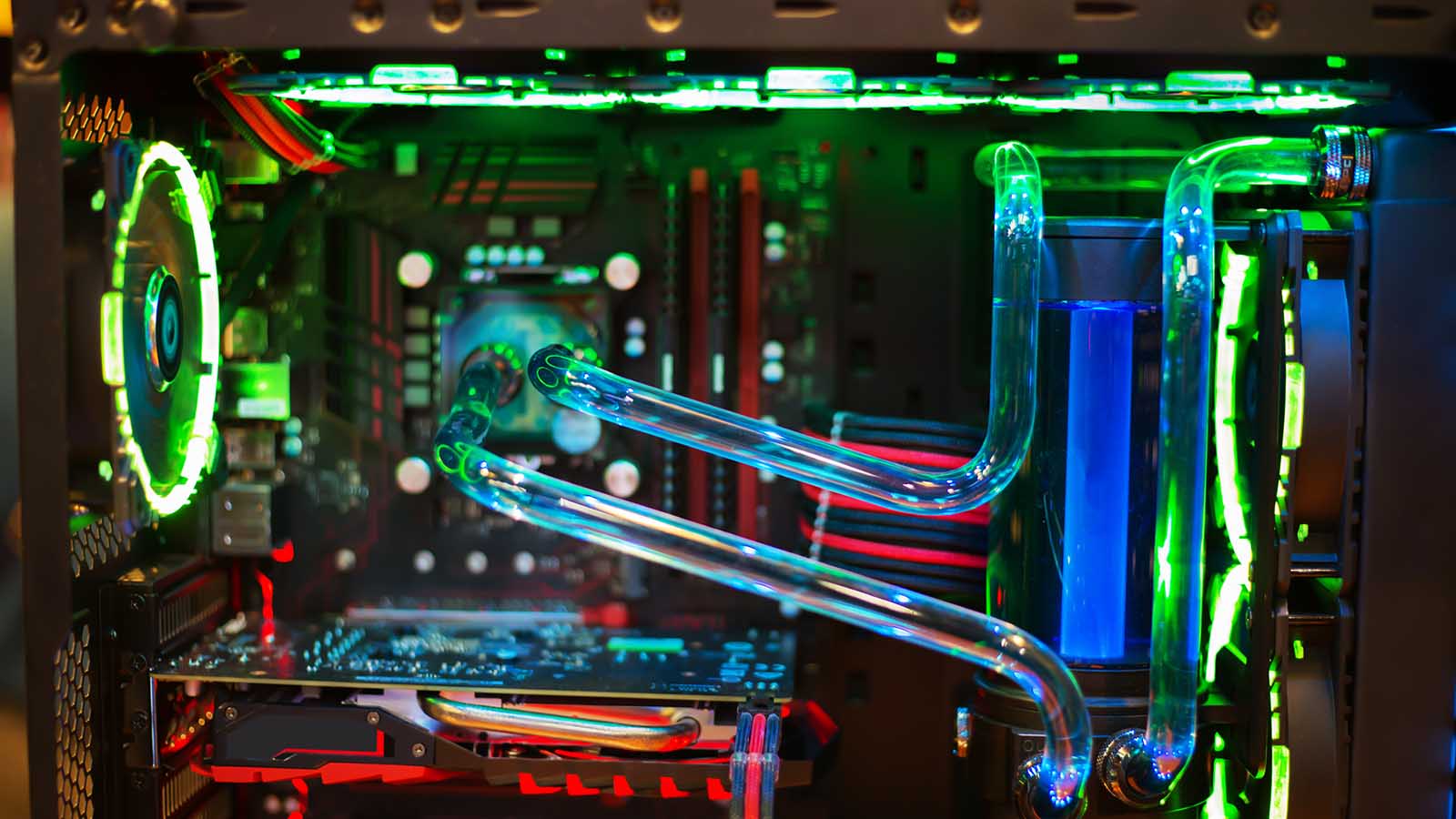Why CPU Temperature Matters
The temperature of your CPU plays a crucial role in the overall health and performance of your computer. If your CPU gets too hot, it can cause system instability, reduce the lifespan of your processor, and even lead to permanent damage. Understanding why CPU temperature matters can help you take necessary measures to keep your computer running optimally.
Firstly, excessive heat can impair the performance of your CPU. When the temperature rises, the CPU may automatically throttle its speed to prevent overheating. This can lead to a decrease in processing power, resulting in slower performance and longer response times. This can be particularly problematic during resource-intensive tasks like gaming or video editing, where a high-performance CPU is crucial.
Additionally, high temperatures can cause system instability. When the CPU becomes too hot, it can produce errors and crashes, leading to frustrating experiences and potential data loss. If you notice your computer freezing or restarting frequently, it could be a sign of overheating.
Moreover, sustained exposure to high temperatures can significantly reduce the lifespan of your processor. Over time, the excessive heat can cause wear and tear on the internal components, leading to permanent damage. This can result in the need for costly repairs or even a complete replacement of the CPU.
Furthermore, monitoring CPU temperature is essential for enthusiasts and overclockers. Overclocking involves running the CPU at higher clock speeds to achieve better performance. However, this also generates more heat. Monitoring the temperature allows users to ensure that their overclocked CPU is running within safe limits and prevents the risk of damage.
Overall, CPU temperature matters because it directly impacts the performance, stability, and lifespan of your computer. By keeping an eye on it and taking appropriate measures, such as cooling solutions and regular maintenance, you can ensure optimal performance and avoid potential hardware issues.
What Is a Normal CPU Temperature?
The normal CPU temperature refers to the temperature range at which your processor operates optimally without any risk of overheating or performance degradation. The specific temperature range can vary depending on the type of CPU, the workload, and the cooling solutions in place.
Typically, for modern CPUs, a normal idle temperature ranges from 30°C to 40°C (86°F to 104°F). Idle temperature refers to the temperature when the CPU is not under heavy load and is at rest. During regular usage, such as browsing the internet or working on documents, the CPU should stay within this temperature range.
Under load, when the CPU is handling strenuous tasks like gaming or video rendering, it is normal for the temperature to increase. A normal load temperature for CPUs can range from 60°C to 80°C (140°F to 176°F), depending on the specific CPU and cooling setup. However, it’s important to note that temperature limits can vary for different CPUs. It’s best to refer to the manufacturer’s specifications or user manual for your specific CPU model.
It’s worth mentioning that certain CPU models, like high-performance processors or those designed for overclocking, may have higher maximum temperature limits. These CPUs are designed to handle more heat and may have different normal temperature ranges compared to mainstream CPUs.
Factors such as ambient temperature, the efficiency of cooling solutions, and case airflow can also affect CPU temperature. If you live in a hot climate or have limited airflow in your computer case, you may experience slightly higher temperatures. However, as long as the temperatures remain within the specified normal range, there is typically no cause for concern.
Monitoring the temperature of your CPU is crucial to ensure it operates within acceptable limits. There are various software utilities available that can provide real-time temperature readings. Additionally, some motherboards come with built-in temperature sensors and monitoring tools.
Remember, always refer to the manufacturer’s guidelines and specifications for your specific CPU model to determine what constitutes a normal temperature range. By keeping your CPU temperature within normal parameters, you can prolong its lifespan, maintain performance, and prevent potential hardware issues.
Factors That Influence CPU Temperature
The temperature of your CPU can be influenced by several factors, which can vary from system to system. Understanding these factors can help you identify potential causes of high CPU temperatures and take appropriate measures to keep your processor cool. Here are some of the key factors that influence CPU temperature:
1. CPU Power and Usage: The amount of power consumed by the CPU and the workload it is under can directly impact its temperature. Higher power usage and intensive tasks like gaming, video editing, or rendering can generate more heat and result in increased CPU temperature.
2. Cooling Solution: The cooling solution installed on your system, including the CPU cooler, case fans, and overall airflow, plays a crucial role in regulating CPU temperature. An efficient cooling system helps dissipate heat effectively and prevents overheating. Factors such as the size, type, and quality of cooling components can greatly influence temperature management.
3. Thermal Paste Application: The proper application of thermal paste between the CPU and the cooler is essential for efficient heat transfer. Poorly applied or dried-out thermal paste can impede heat dissipation and lead to higher CPU temperatures. Regularly checking and reapplying thermal paste can help maintain optimal temperatures.
4. System Overclocking: Overclocking, which involves increasing the clock speed of the CPU, can significantly raise its temperature. When you overclock your CPU, it consumes more power and generates more heat. To prevent excessive temperature spikes, it is crucial to have adequate cooling solutions and monitor temperature closely when overclocking.
5. Ambient Temperature: The temperature of the room or environment in which your computer is located also affects CPU temperature. Higher ambient temperatures can make it more challenging for cooling systems to dissipate heat, resulting in increased CPU temperatures.
6. Dust and Dirt Accumulation: Dust and dirt accumulation on cooling components, such as the CPU heatsink or case fans, can restrict airflow and hinder heat dissipation. Regularly cleaning these components can help maintain optimal airflow and prevent temperature issues.
7. Case Design and Cable Management: The design of your computer case, including the arrangement of components and cable management, can impact airflow and heat dissipation. Proper cable management and adequate space between components can help ensure proper ventilation, reducing CPU temperatures.
By considering these factors and taking appropriate steps such as using high-quality cooling solutions, applying thermal paste correctly, maintaining a clean system, and optimizing the airflow in your case, you can effectively manage and control the temperature of your CPU.
How to Monitor CPU Temperature
Monitoring your CPU temperature is crucial to ensure it stays within safe limits and prevent potential issues like overheating and system instability. Fortunately, there are several methods available to monitor CPU temperature. Here are some common methods to keep an eye on your CPU temperature:
1. BIOS/UEFI: Many computer motherboards provide temperature monitoring capabilities in the BIOS or UEFI settings. By accessing the BIOS or UEFI interface, you can usually find a section that displays real-time temperature readings for your CPU.
2. Software Utilities: There are numerous software applications available that allow you to monitor CPU temperature. These utilities often provide real-time temperature readings, as well as additional information like fan speeds and voltages. Some popular options include HWMonitor, Core Temp, and SpeedFan.
3. Manufacturer Software: Some CPU manufacturers, such as Intel and AMD, provide their own software for monitoring CPU temperature. For example, Intel offers the Intel Extreme Tuning Utility (XTU), which includes temperature monitoring features along with overclocking capabilities.
4. Third-party Hardware Monitoring Tools: If you have a dedicated fan controller or monitoring device, it may come with its own software for tracking CPU temperature. These tools often provide more advanced features like customizable fan curves and alerts.
5. Task Manager: For a quick glance at CPU temperature, you can use the built-in Task Manager in Windows. Simply open Task Manager, go to the Performance tab, and select the CPU section. Here, you’ll find a real-time graph displaying CPU usage and temperature.
6. Hardware Monitoring Gadgets: There are various hardware monitoring gadgets available that can display temperature readings directly on your desktop. These gadgets can provide a convenient way to keep track of your CPU temperature without having to open additional software.
When monitoring your CPU temperature, it’s important to establish a baseline for what is considered “normal” for your specific CPU model. Refer to the manufacturer’s specifications or user manual to determine the acceptable temperature range. If you notice consistently high temperatures or sudden spikes, it may indicate a cooling issue that needs to be addressed.
By regularly monitoring your CPU temperature, you can ensure that your processor operates safely and efficiently, allowing you to take necessary steps to prevent overheating and extend the lifespan of your hardware.
Understanding Idle and Load Temperature
When monitoring CPU temperature, it’s important to differentiate between idle and load temperature. Understanding these two concepts provides insight into how your CPU performs under different conditions and helps you assess its cooling and stability.
Idle Temperature: Idle temperature refers to the temperature of your CPU when it is not under heavy load and is essentially in a resting state. During idle, the CPU is not performing resource-intensive tasks, and its power consumption and heat generation are minimal. Idle temperature is an essential indicator of how well your cooling system is functioning at low workloads.
Load Temperature: Load temperature refers to the temperature of your CPU when it is under heavy workload or performing resource-intensive tasks. This can include tasks such as gaming, video editing, or running software that requires a significant amount of processing power. Load temperature reflects how effectively your cooling system is handling the increased heat generated by the CPU when it is working hard.
It’s normal for the CPU temperature to increase when the CPU is under load compared to idle. This increase in temperature is because the CPU is utilizing its maximum potential and generating more heat as a result. However, it’s important to ensure that the load temperature remains within safe limits specified by the manufacturer, as sustained high temperatures can lead to performance issues or even damage to the CPU.
Monitoring both idle and load temperature provides a comprehensive picture of how well your cooling system is managing CPU heat. By understanding the temperature differences between idle and load, you can identify any potential cooling bottlenecks or issues, such as inadequate airflow or an underperforming CPU cooler.
It’s worth noting that the ideal temperature range for your CPU may vary depending on the specific model and design. Consult the manufacturer’s specifications or user manual for your CPU to determine the acceptable temperature range for both idle and load scenarios.
By monitoring and evaluating your CPU’s idle and load temperatures, you can optimize your cooling system, ensure system stability, and avoid the risks of overheating and performance degradation. Regular monitoring allows you to take appropriate cooling measures, such as improving airflow, upgrading your CPU cooler, or adjusting fan speeds, to maintain optimal operating temperatures for your CPU.
Ideal Temperature Range for CPUs
The ideal temperature range for CPUs may vary depending on the specific model and design of the processor. It is essential to refer to the manufacturer’s specifications or user manual for your CPU to determine the acceptable temperature range. However, as a general guideline, most CPUs operate optimally within a certain temperature range.
For idle temperatures, a typical range for modern CPUs is around 30°C to 40°C (86°F to 104°F). Idle temperature refers to the temperature when the CPU is not under heavy load and is essentially at rest. It is crucial to note that idle temperature can vary depending on factors such as ambient temperature and the efficiency of your cooling solutions.
Under load, when the CPU is handling intensive tasks, the temperature can rise. A normal load temperature range for most CPUs is around 60°C to 80°C (140°F to 176°F). However, it’s important to note that this range can vary depending on the specific CPU model and cooling setup. Some higher-performance CPUs or those designed for overclocking may have higher maximum temperature limits.
Exceeding the recommended temperature range for your CPU can lead to performance issues, system instability, and potentially permanent damage to the processor. It’s essential to monitor your CPU temperature regularly to ensure it stays within the acceptable limits.
Keep in mind that the specific temperature limits can vary for different CPUs, and some CPUs may tolerate higher temperatures better than others. Manufacturers test their CPUs to withstand certain temperature ranges, and exceeding those limits may void your warranty or lead to irreversible damage.
It’s crucial to take proactive measures to maintain your CPU’s temperature within the ideal range. This includes ensuring proper airflow within your computer case, using high-quality cooling solutions, applying thermal paste correctly, and regularly cleaning dust and debris that can accumulate on the CPU heatsink and fans.
If you consistently experience temperatures outside the acceptable range for your CPU, it may be necessary to consider upgrading your cooling solutions or adjusting fan speeds. Consulting with an expert or seeking advice from online communities dedicated to computer hardware can provide valuable insight and guidance in optimizing your CPU’s temperature performance.
By keeping your CPU within the ideal temperature range, you can optimize its performance, prolong its lifespan, and minimize the risk of hardware failures or system instability.
Signs of an Overheating CPU
An overheating CPU can lead to various issues, ranging from reduced performance to potential hardware damage. It’s important to be able to recognize the signs of an overheating CPU so that you can take immediate action to address the problem. Here are some common signs to watch out for:
1. System Slowdown: One of the most noticeable signs of an overheating CPU is a noticeable decrease in system performance. You may experience sluggishness, freezing, or delayed response times when performing tasks that previously ran smoothly. This slowdown occurs as the CPU automatically reduces its speed to prevent further heat buildup and protect itself.
2. Frequent System Crashes: If your computer frequently crashes or suddenly shuts down without warning, overheating may be the culprit. When the CPU reaches high temperatures, it can trigger a thermal protection mechanism that forces the system to shut down to prevent damage. If you consistently experience system crashes, especially when under load, it’s a strong indication of an overheating CPU.
3. Excessive Fan Noise: When the CPU is overheating, the cooling system – including fans – will work harder to dissipate the heat. This can result in noticeably louder and more aggressive fan noise. If you notice a significant increase in fan noise even during normal usage, it may indicate that your CPU is running hot.
4. Blue Screen of Death (BSOD): Overheating can also trigger the infamous Blue Screen of Death. If your computer frequently displays blue screen errors, it is worth considering overheating as a potential cause. The error code displayed on the screen can offer additional clues about the specific issue.
5. Unusual System Behavior: An overheating CPU can manifest in various unusual ways. You may experience software glitches, random system freezes, or applications crashing unexpectedly. Graphics-intensive applications, such as games or video editing software, may exhibit graphical artifacts or irregular performance due to an overheating CPU.
6. High CPU Temperature Readings: Monitoring your CPU temperature regularly is essential to identify potential overheating. If you consistently observe CPU temperatures exceeding the normal range specified by the manufacturer, it suggests that your CPU is running too hot.
If you notice any of these signs of an overheating CPU, it’s crucial to address the issue promptly. Start by ensuring proper airflow within your computer case, cleaning any dust or debris, and verifying that your cooling solution is functioning correctly. Consider upgrading your cooling system if necessary.
Remember, prevention is key. Regularly monitor your CPU temperature, maintain a clean and dust-free system, and take proactive measures to keep your CPU cool. By doing so, you can ensure optimal performance and prolong the lifespan of your CPU.
How to Keep Your CPU Cool
Keeping your CPU cool is crucial for maintaining optimal performance, preventing overheating, and extending the lifespan of your processor. Here are some effective strategies to ensure your CPU stays cool:
1. Ensure Proper Airflow: Proper airflow is essential for keeping your CPU cool. Make sure your computer case has adequate ventilation and is not obstructed by objects or walls. Position your case in a well-ventilated area and ensure that intake and exhaust fans are properly installed and functioning.
2. Clean Dust and Debris: Dust and debris can accumulate on the CPU heatsink, fans, and other cooling components, impeding airflow and causing heat buildup. Regularly clean your computer’s internals using compressed air or an anti-static brush to remove dust and maintain optimum airflow.
3. Apply Thermal Paste Correctly: Thermal paste facilitates heat transfer between the CPU and the cooler. Ensure that you apply an adequate amount of thermal paste on the CPU surface before attaching the cooler. Correctly applied thermal paste helps fill any gaps between the CPU and the cooler, facilitating efficient heat dissipation.
4. Upgrade Your CPU Cooler: If you have an older or stock CPU cooler, consider upgrading to a more efficient aftermarket cooler. High-quality air coolers or liquid cooling solutions can offer better heat dissipation and keep your CPU temperatures lower. Ensure that the cooler is compatible with your CPU socket and fits properly in your case.
5. Monitor and Adjust Fan Speed: Most motherboards allow you to monitor and control fan speeds. Ensure that your fans are set to an appropriate speed for efficient cooling. Increasing the fan speed can enhance airflow, but it may result in increased noise. Strike a balance between cooling performance and noise levels that suits your needs.
6. Avoid Overclocking or Adjust with Caution: Overclocking your CPU generates more heat and increases the risk of overheating. If you choose to overclock, ensure that you have adequate cooling solutions to handle the increased heat. Monitor your CPU temperature closely during overclocking and make adjustments accordingly to maintain safe temperatures.
7. Manage Cable Routing: Proper cable management not only improves the overall appearance of your system but also aids in airflow. Neatly route cables away from the CPU and other cooling components to prevent obstruction. Use cable ties or Velcro straps to secure and organize cables, ensuring they do not impede airflow.
8. Maintain a Comfortable Ambient Temperature: Keep your computer in an environment with a comfortable ambient temperature. High room temperatures can make it difficult to maintain low CPU temperatures. Use air conditioning or adequate ventilation to ensure a cool and stable environment for your computer.
By implementing these measures, you can effectively keep your CPU cool under various usage scenarios, ensuring optimal performance and prolonging the lifespan of your processor. Regular monitoring of CPU temperatures is also essential to identify any potential cooling issues and take timely actions to address them.
Cooling Solutions for CPUs
Efficient cooling is essential for maintaining optimal CPU temperatures and preventing overheating. There are various cooling solutions available to keep your CPU cool, each with its advantages and considerations. Here are some common cooling solutions for CPUs:
1. Air CPU Coolers: Air CPU coolers are the most common and budget-friendly cooling solution. They consist of a heatsink with fins and one or more fans. The heatsink absorbs heat from the CPU, and the fans blow air over the fins, dissipating the heat. Air coolers come in various sizes and designs, with larger coolers often providing better cooling performance.
2. Liquid CPU Coolers: Liquid CPU coolers, also known as AIO (All-In-One) coolers, consist of a pump, radiator, and fan(s). The pump circulates coolant through the system, while the radiator and fan(s) dissipate heat. Liquid coolers offer more efficient cooling than air coolers and are popular among enthusiasts and gamers. They come in different sizes, such as 120mm, 240mm, or 360mm, depending on the radiator size.
3. Custom Water Cooling Loop: Custom water cooling loops involve building a customized cooling system using separate components. They offer the highest cooling performance but are more expensive and require advanced knowledge and maintenance. Custom loops consist of a pump, reservoir, radiator, water blocks, tubing, and fittings, allowing enthusiasts to create a highly efficient and visually appealing cooling system.
4. Thermal Electric Coolers: Thermal Electric Coolers (TECs) use a solid-state device (Peltier element) to transfer heat away from the CPU. The Peltier element generates a temperature difference when an electric current is passed through it, cooling one side and heating the other. TECs are relatively expensive and less common, primarily used in niche applications or extreme overclocking scenarios.
5. Passive Cooling: Passive cooling relies on a heatsink or heat spreader without the use of a fan. This method is often used for low-power, fanless systems, such as some mini PCs or media centers. While passive cooling is silent and maintenance-free, it may not provide sufficient cooling for higher performing CPUs or under heavy workloads.
When selecting a cooling solution for your CPU, consider factors such as your specific CPU model, budget, cooling performance requirements, available space in your case, and noise preferences. It’s important to choose a cooling solution that matches your system’s needs and allows for adequate heat dissipation.
Regardless of the cooling solution you choose, ensure proper installation and follow manufacturer guidelines. Apply an appropriate amount of thermal paste between the CPU and the cooler to ensure maximum heat transfer efficiency.
Regular maintenance, such as cleaning dust accumulation, and monitoring CPU temperatures are necessary to ensure optimum cooling performance over time. By selecting and maintaining the right cooling solution for your CPU, you can keep your processor running cool, reducing the risk of overheating-related issues and maximizing performance.
Conclusion
Understanding and managing CPU temperature is essential for maintaining optimal performance, stability, and longevity of your computer system. By following the guidelines and implementing effective strategies to keep your CPU cool, you can prevent overheating and potential hardware damage.
Start by monitoring your CPU temperature regularly using software utilities or built-in monitoring tools. Familiarize yourself with the normal temperature range for your specific CPU model, both at idle and under load. If you notice any signs of overheating, such as system slowdowns, frequent crashes, or excessive fan noise, take prompt action to address the issue.
There are various methods you can employ to keep your CPU cool. Ensure proper airflow within your computer case, clean dust and debris, and manage cable routing to optimize ventilation. Consider upgrading your CPU cooler to a more efficient solution, such as an air cooler or liquid cooler, depending on your budget and cooling requirements. Apply thermal paste correctly for optimal heat transfer between the CPU and cooler.
In addition, be mindful of factors that influence CPU temperature, such as CPU power usage, cooling solution efficiency, and overclocking. Avoid pushing your CPU beyond its limits if you don’t have adequate cooling solutions in place.
By implementing these measures and maintaining a vigilant approach to CPU temperature management, you can ensure that your processor operates within safe temperature ranges, improving performance and extending the lifespan of your CPU.
Remember, CPU temperature is a critical aspect of overall system health, and monitoring and addressing temperature concerns should be a regular part of computer maintenance. With proper cooling solutions and proactive measures, you can keep your CPU cool, ensuring the smooth functioning and longevity of your computer system.







